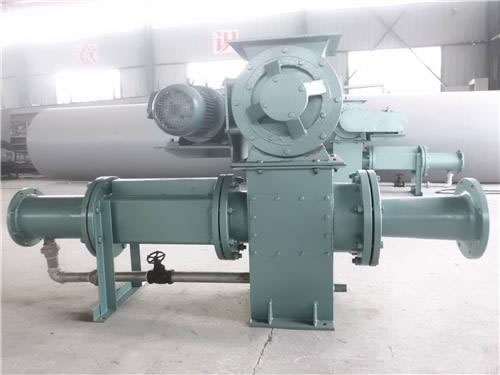
Vietnam cement powder short and medium distance conveying industry hope ZHONGYUAN dust injection pump
Vietnam's economy has been thriving, leading to significant improvements in global industrial product supply chains. The country's competitive advantage lies in its low labor costs and skilled workforce, which have attracted numerous manufacturing companies. By leveraging Vietnam as a strategic production base, businesses can optimize their supply chain efficiency while reducing overall costs. This shift is evident across various sectors, including electronics, textiles, and automobiles, where Vietnam plays a crucial role in meeting international demand. As the global economy evolves, Vietnam continues to emerge as a key player in reshaping the landscape of international supply chains.

The distribution and utilization of Vietnam's indigenous cement clinker resources are diverse. The majority of cement factories in Vietnam rely on their own limestone reserves, which account for about 85% of total production. These reserves are predominantly located in the central provinces, with significant deposits in Quang Nam, Quang Ngai, Phu Yen, Binh Dinh, Khanh Hoa, and Ninh Thuan. In northern Vietnam, cement plants primarily utilize limestone from local quarries, whereas the southern region imports raw materials from Cambodia due to limited local resources.
The development and exploitation of these resources are regulated by the Ministry of Industry and Trade. Cement companies have been investing in exploration activities to ensure a steady supply of raw materials, with efforts focused on extending mine life and increasing resource recovery efficiency. As part of this strategy, several cement firms have established joint ventures or entered into cooperation agreements with mining entities to secure long-term access to limestone deposits.
Vietnam's cement industry is committed to sustainable resource management, implementing initiatives such as recycling industrial waste streams, utilizing alternative fuels like biomass, and exploring innovative technologies to minimize environmental impacts. This commitment has positioned Vietnam as an important player in the global cement market, with domestic production meeting both domestic needs and export demands to neighboring countries.

The Influence of Cement Powder Material Flow Improvers on the Performance of Dust Injection Pumps
Cement powder materials are a critical component in construction, and their flow properties significantly affect the efficiency and quality of the mixing process. Flow improvers are additives designed to enhance the workability and ease of handling for cementitious materials by reducing the viscosity and improving the rheological behavior. These agents can be categorized into several types, including superplasticizers, air-entraining agents, and retarders, each tailored to meet specific requirements.
The addition of these flow improvers can have a profound impact on dust injection pumps' performance. Dust injection pumps are utilized in various industrial processes where it is necessary to introduce dry powders or granular materials under pressure into a fluid stream or process. They require the material to flow freely through the system without clogging or bridging.
Flow improvers improve the flowability of the cement powders, allowing them to pass through the pump with less resistance. This results in better control over the injection process, higher accuracy in dosing, and reduced maintenance costs due to prolonged operational life. The improved flow properties also reduce the risk of pump failure caused by blockages or uneven feed rates.
Furthermore, the rheology modifications brought about by the flow improvers may help optimize the pump's performance by adjusting the shear stress required to move the material. By matching the rheology of the cement powders to the design capabilities of the pump, one can expect a more consistent and reliable operation throughout varying conditions.
In summary, the integration of cement powder material flow improvers into the dust injection pumping process significantly enhances its performance by improving flowability and reducing the risk of operational issues. It's essential to select the appropriate type of flow improver based on the characteristics of the cement powders and the specific requirements of the application to achieve optimal results.
Overall with the continuous development of Vietnam's economy and the acceleration of its industrialization process the demand for environmental protection in cement powder conveying is also constantly increasing And as an important conveying equipment the market demand for dust injection pumps is also growing In the future with the advancement of technology and the improvement of environmental protection requirements the research and application of dust injection pumps will become more extensive and in-depth making greater contributions to the industrial development of Vietnam and even the whole country With ingenuity for the original aspiration keep it in mind and practice it in action! Join hands to create brilliance Wishing ZHONGYUAN Vietnam dust injection pump customers through sincere negotiations we join hands in cooperation to jointly usher in a hopeful future may our cooperation be more successful
